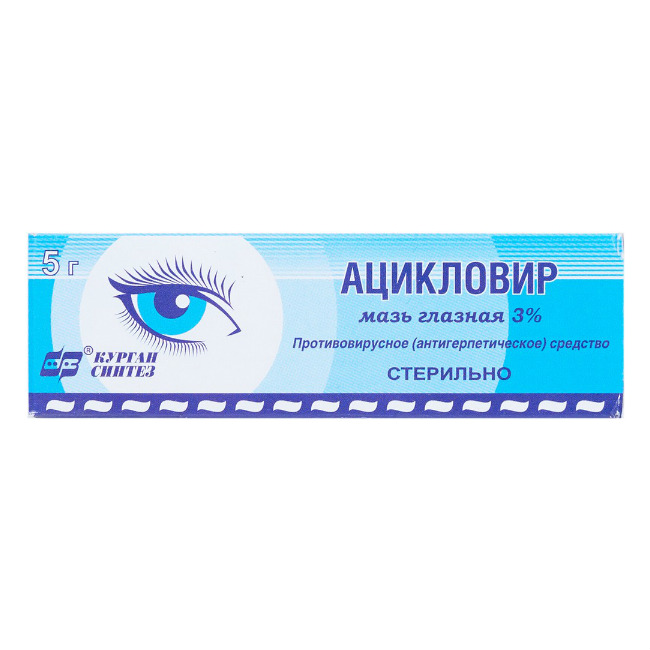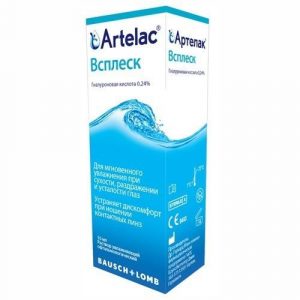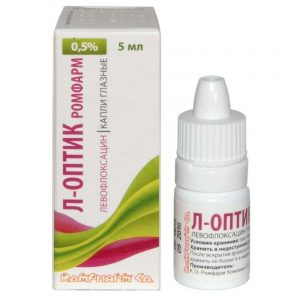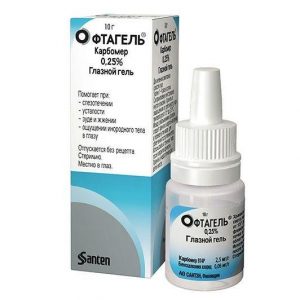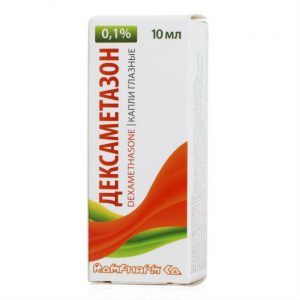Description
Release form
Acyclovir eye ointment. Ointment for topical application, white or white with a yellowish tint, or yellow.
Packaging
5 g – aluminum tubes (1) – packs of cardboard.
Pharmacological action
Antiviral (antiherpetic) drug – a synthetic analogue of thymidine nucleoside.
In virus-infected cells containing viral thymidine kinase, phosphorylation occurs and acyclovir is converted to acyclovir monophosphate. Under the influence of acyclovir guanylate cyclase, monophosphate is converted into diphosphate and, under the action of several cellular enzymes, into triphosphate. High selectivity and low toxicity to humans are due to the lack of the necessary enzyme for the formation of acyclovir triphosphate in intact cells of the macroorganism.
Acyclovir triphosphate, integrating into the deoxyribonucleic acid (DNA) synthesized by the virus, blocks the reproduction of the virus. The specificity and very high selectivity of the action of acyclovir is also due to its predominant accumulation in cells affected by the herpes virus.
Highly active against Herpes simplex virus types 1 and 2, causing chickenpox and shingles (Varicella zoster) of the Epstein-Barr virus (types of viruses are listed in increasing order of the minimum inhibitory concentration (MIC) of acyclovir).
Moderately active against cytomegalovirus (CMV).
When cold sores prevents the formation of new elements of the rash, reduces the likelihood of skin dissemination and visceral complications, accelerates the formation of crusts, and reduces pain in the acute phase of herpes zoster.
Pharmacokinetics
Acyclovir easily penetrates the corneal epithelium and creates a therapeutic concentration in the intraocular fluid. Currently, there are no methods for determining acyclovir in the blood when applied as an eye ointment. Acyclovir for external use is determined only in the urine, and in a small amount. This concentration has no therapeutic value.
Indications
Herpetic keratitis due to Herpes simplex virus type 1 or 2.
Contraindications
Breastfeeding
hypersensitivity to acyclovir or valaciclovir.
Use during pregnancy and lactation
Use of the drug during pregnancy is possible if if the potential benefit to the mother outweighs the potential risk to the fetus.
The drug is found in breast milk after it enters the mother ² ¢s systemic circulation, so breast-feeding should be discontinued during the treatment period.
Composition
1 g of ointment contains acyclovir 30 mg
Excipients: petroleum jelly – up to 1 g.
Dosing and Administration
For adults and children, an ointment in the form of a 1 cm strip is placed in the lower conjunctival sac 5 times a day (every 4 hours) until it heals.
Treatment is continued for another 3 days after healing.
Side effects
Side effects are given according to the frequency of occurrence in clinical trials: very often (> 10%) often (> 1% and <10%) infrequently (> 0.1% and <1%) rarely (> 0.01% and <0.1%) is very rare (<0.01%). Allergic reactions: very rarely – immediate-type hypersensitivity reactions (including angioedema). From the side of the organ of vision: infrequently – pinpoint superficial keratopathy (does not require cessation of treatment and disappears without consequences) often – mild burning (passing over time) infrequently – conjunctivitis rarely – blepharitis. Drug Interaction Use with immunostimulators enhances the effect of acyclovir. Overdose Overdose is possible by accidental ingestion. Symptoms: headache, neurological disorders, shortness of breath, nausea, vomiting, diarrhea, renal dysfunction, lethargy, convulsions, coma. Treatment: maintenance of vital functions, hemodialysis. Storage conditions The drug should be stored out of the reach of children at a temperature of 15 ° to 25 ° C. Expiration 3 years. After opening the tube, eye ointment should be used within 1 month. Deystvuyuschee substances acyclovir pharmacy drugstore p1738 pharmacy Prescription dosage form dosage form ointment Synthesis, Russian
